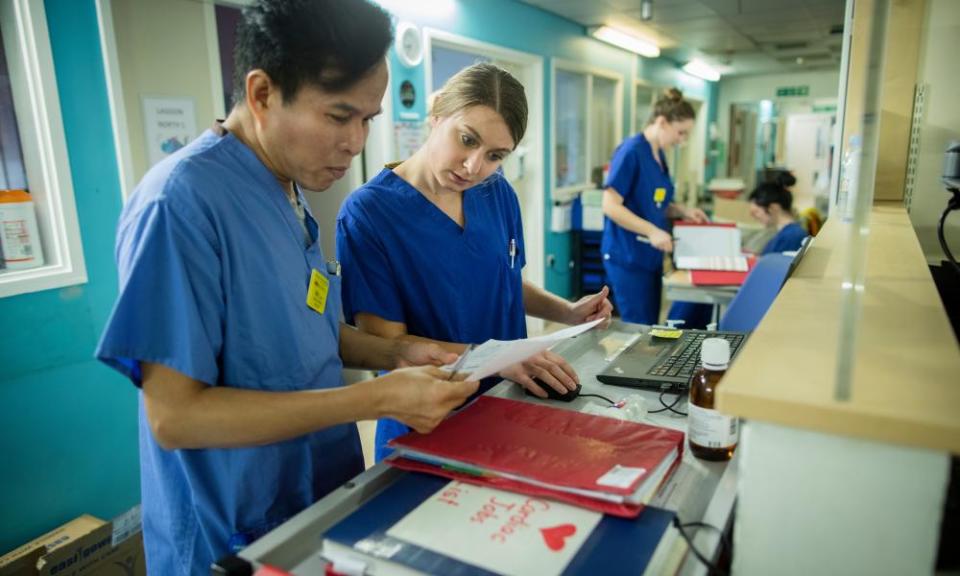Flu and other viruses pile pressure on NHS as waiting lists hit new high

Viruses including flu, respiratory syncytial virus (RSV) and the winter vomiting bug are putting extra pressure on the NHS in England in the first week of winter while waiting lists reached another record high in October.
With 7.2 million patients awaiting treatment, the Health Foundation charity said the health and care systems were “gridlocked” and put the safety and quality of patient care at risk.
The NHS says it is seeing “the post-pandemic impact of viruses circulating again”, with data showing another jump in the number of beds required for flu patients last week, up 49% on the previous seven days.
A total of 772 general and critical care beds were occupied by flu patients in the week to 4 December compared with just 34 beds in the first week of December 2021, a 22-fold increase.
Norovirus cases are also increasing – up almost 90% on the same time last year according to NHS England, while the number of paediatric beds unavailable due to RSV is five times higher than the same week last year, with an average of 132 each day compared with 22 in the same period in 2021.
Elsewhere the number of people awaiting treatment on the NHS in England has reached another record, topping 7.2 million for the first time. More than 410,000 patients were waiting more than a year for treatment in November.
Almost half of patients attending acute trusts in England waited more than four hours in November, the worst on record. In November 2010, 95.8% of people were attended to in four hours or less; last month the figure stood at 54.5%.
One in seven patients arriving by ambulance still waited more than an hour to be treated in A&Es, with one in three waiting more than 30 minutes. A total of 11,296 patients waited with ambulance crews an hour or more before being seen, a slight improvement on the previous week.
The NHS’s national clinical director for urgent and emergency care, Profr Julian Redhead, said the service was “dealing with a perfect storm of pressures this winter”.
He said existing pressures were exacerbated by flu hospitalisations, record numbers of patients requiring A&E care andcontinuing problems with social care, which mean the NHS is unable to discharge medically fit patients.
It comes as a report from the House of Lords’ adult social care committee found that “adult social care as a whole has been invisible – poorly understood and often neglected by policymakers, the public and the media”, and recommended increased funding to provide a “sustainable” care system.
Tim Gardner, a senior policy fellow at the Health Foundation, said the NHS figures and Lords’ report showed “a gridlocked health and care system struggling to meet the needs of patients, even before the full force of winter and the planned industrial action kicks in.
“A fully funded, long-term plan is required to tackle the crisis in social care, address workforce shortages and reform a system that is not fit for purpose.”
The shadow health secretary, Wes Streeting, said: “Behind the statistics are people suffering, sometimes for months or even years, putting their lives on hold because of their pain and discomfort.”
The Liberal Democrats’ health spokesperson, Daisy Cooper, said the figures were “damning” and reflective of the NHS “on its knees”, with the blame “entirely with this Conservative government”.
“Every day we hear horror stories of patients dying whilst they wait for help to arrive or to be admitted into hospital. The public are left asking: how has it come to this?

 Yahoo Movies
Yahoo Movies 